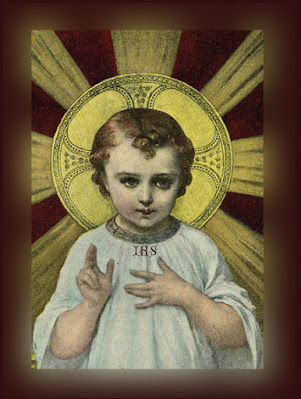Vestments: White
INTROIT
UPON a high throne I saw a Man sitting, whom a multitude of Angels adore singing together: Behold Him the name of whose empire is for ever. Ps. 99. 1. O sing joyfully to the Lord, all the earth: serve ye the Lord with gladness. ℣. Glory be to the Father, and to the Son, and to the Holy Ghost. As it was in the beginning, is now, and ever shall be, world without end. ℟. Amen. — Upon a high throne …
COLLECT - WE BESEECH Thee, O Lord, of Thy heavenly goodness hear the prayers of Thy suppliant people: that they may both perceive what things they ought to do, and have the strength to do them. Through our Lord Jesus Christ, Thy Son …
EPISTLE
Romans 12: 1-5
BRETHREN: I beseech you, by the mercy of God that you present your bodies a living sacrifice, holy, pleasing unto God, your reasonable service. And be not conformed to this world, but be reformed in the newness of your mind, that you may prove what is the good, and the acceptable, and the perfect will of God. For I say, by the grace that is given me, to all that are among you, not to be more wise than it behoveth to be wise, but to be wise unto sobriety and according as God hath divided to every one the measure of faith. For as in one body we have many members, but all the members have not the same office; so we, being many, are one body in Christ, and every one members one of another; in Christ Jesus our Lord.
GRADUAL
BLESSED be the Lord, the God of Israel, who alone doth wonderful things from the beginning. Let the mountains receive peace for Thy people and the hills justice.
GOSPEL
Luke 2: 42-52
WHEN JESUS was twelve years old, they going up into Jerusalem, according to the custom of the feast, and having fulfilled the days, when they returned, the Child Jesus remained in Jerusalem, and His parents knew it not. And thinking that He was in the company, they came a day’s journey, and sought Him among their kinsfolk and acquaintances. And not finding Him, they returned into Jerusalem, seeking Him. And it came to pass that after three days they found Him in the Temple, sitting in the midst of the doctors, hearing them and asking them questions. And all that heard Him were astonished at His wisdom and His answers. And seeing Him they wondered. And His Mother said to Him: Son, why hast Thou done so to us? Behold Thy father and I have sought Thee sorrowing. And He said to them: How is it that you sought Me? Did you not know that I must be about My Father’s business? And they understood not the word that He spoke unto them. And He went down with them and came to Nazareth, and was subject to them. And His Mother kept all these words in her heart. And Jesus advanced in wisdom and age, and grace with God and men.
OFFERTORY
Psalm 99:1-2
SING JOYFULLY to God, all the earth, serve ye the Lord with gladness: come in before His presence with exceeding great joy: for the Lord He is God.
SECRET - O LORD, may the Sacrifice we offer up to Thee, ever quicken and protect us. Through our Lord Jesus Christ, Thy Son …
PREFACE (Preface of the Epiphany) - IT is truly meet and just, right and for our salvation, that we should at all times and in all places give thanks to Thee, holy Lord, Father almighty, eternal God: for when Thine only begotten Son was manifested in the substance of our mortal flesh, with the new light of His own immortality He restored us. And therefore with Angels and Archangels, with Thrones and Dominations, and with all the hosts of the heavenly army we sing a hymn to Thy glory, evermore saying:
COMMUNION
Luke 2:48-49
SON, why hast Thou done so to us? Thy father and I have sought Thee sorrowing. How is it that you sought me? did you not know that I must be about My Father’s business?
POST COMMUNION - O ALMIGHTY God, we humbly beseech Thee, that Thou wouldst grant to those whom Thou dost refresh with Thy Sacraments that they may serve Thee worthily by a manner of life pleasing to Thee. Through our Lord Jesus Christ, Thy Son …


















